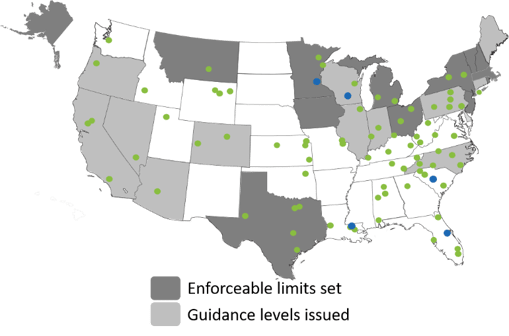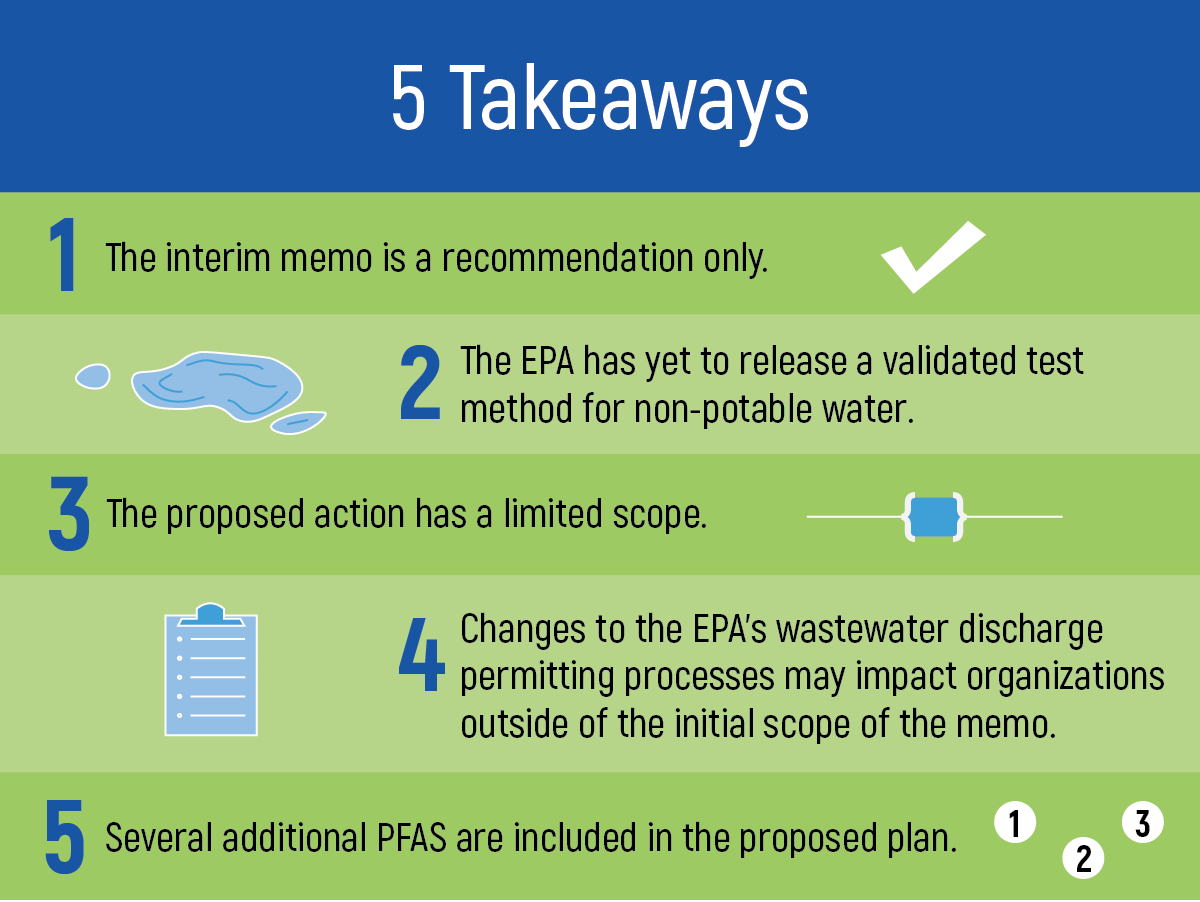Which Compounds Should We Include in Our PFAS Testing Program?
When designing a PFAS testing program, one of the fundamental questions that needs to be answered is which compounds to look for. Along with some other key decision points, the answer can greatly influence the design of your program.
When working with our clients, we help them answer this question a couple of ways:
First, has your state issued rules or advisories? PFAS testing may be mandated by law, depending on your location, but the compounds covered by the regulations vary from state to state. PFOA and PFOS are the most commonly regulated contaminants. These two PFAS compounds have been studied for decades and are linked to a myriad of health issues.

As I write this, 23 states have issued some sort of rule or advisory for PFOA and PFOS levels in potable and non-potable water. Ten have also set screening levels for these compounds in soil. This is in addition to the EPA’s Health Advisory Level (HAL) of 70 parts per trillion (ppt) for PFOA and PFOS individually and combined. Furthermore, whether a promulgated rule or simply guidance, some states set their levels lower than the EPA’s HAL. For example, Michigan set its enforceable limits for PFOA at 8 ppt and PFOS at 16 ppt for public water systems.
The Interstate Technology Regulatory Council (ITRC) keeps an updated list of rules and advisories for each state. You can download their PFAS Water and Soil Values Table here.
Some states require testing for other PFAS compounds as well. For example, New Jersey was one of the first states to require testing for PFNA, a surfactant used in the production of high-performance plastics. NJ set enforceable limits for PFNA in both groundwater and drinking water of 13 ppt. Since then, nine additional states have added PFNA to the list of compounds they monitor or regulate with an enforceable limit. Again, refer to the ITRC table for the latest info on what is required in your state.
Second, you need to consider the likely sources of PFAS in your area. Obviously, focusing first on those substances you’re required to test for makes sense. But what about the thousands of other compounds in the PFAS family? Does it make sense to test for the presence of any of these substances?
Clearly more research is needed, but the industry has already begun to respond. One example of this is 6:2 FTOH, a short-chain PFAS that was approved by the FDA for use in food packaging and the subject of the two studies cited above. As a result of the FDA’s initial findings, several manufacturers have voluntarily agreed to stop using food packaging containing 6:2 FTOH once their current supplies are depleted.
That’s all well and good, but if you’re concerned about public health, that’s not going to solve the PFAS problem you may already have. Since PFAS don’t break down naturally, all of the PFAS containing waste products sent to the landfill may already have contaminated the surrounding soil. Remember, the lawsuits filed against Wolverine, and in turn, against 3M, stemmed from landfills used in the 1960s to dispose of waste from a local tannery. The food wrapper tossed into the garbage last year may be long gone, but the PFAS chemicals it contained probably are not.
Speaking of landfills, the greatest threat of PFAS contamination comes from unlined (or poorly lined) private, industrial landfills. However, while most municipal landfills are lined and the leachate collected, they may still create a problem when this leachate is sent to the local water treatment facility. Traditional water treatment processes do not remove PFAS, and they can convert PFAS precursors into PFAS.
Finally, airports are another source of PFAS that municipalities need to be thinking about. Aqueous film-forming foam (AFFF) has been used to fight aviation fires for decades, and all AFFF contains PFAS. PFOS was the primary compound used. PFOA might also be found in trace amounts as it was a byproduct of the manufacturing process. Although this AFFF formulation was phased out of production in 2002 by the manufacturer, the product has a long shelf life. Stockpiles still exist, and many states have not restricted their use.
Legacy AFFF formulations have been replaced with what the industry often refers to as Modern Fluorotelomer AFFF. This formulation does not contain PFOS, though it may still contain trace amounts of PFOA. More importantly, it leverages the surfactant qualities of short-chain PFAS, which studies show break down into at least two PFAS compounds: 6.2 FTS and PFHxA.
Currently, no states have issued rules or advisories for 6.2 FTS, but both Texas and Michigan have promulgated rules addressing PFHxA levels. If you’re not in one of these two states, whether or not you decide to include these two compounds in your test plan probably depends on 1/ How toxic you believe the short-chain PFAS are; 2/ Whether your state’s regulatory agency is considering issuing a ruling on these compounds.
The ITRC has an excellent fact sheet if you’re looking for more information on PFAS in AFFF.
Still Have Questions?
I wish I could leave you with hard and fast rules about which compounds you should include in your PFAS testing program, but so much of it depends on your environment. Hopefully, the information I’ve shared has helped you take a step in the right direction. Of course, if you’d like to speak to one of our advisors about your situation, please don’t hesitate to reach out to us directly. We’d be more than happy to provide additional guidance or help you construct a test plan that makes sense for your community.





